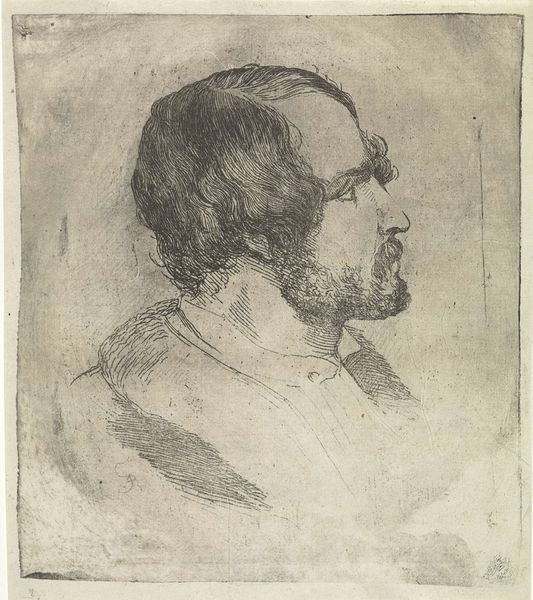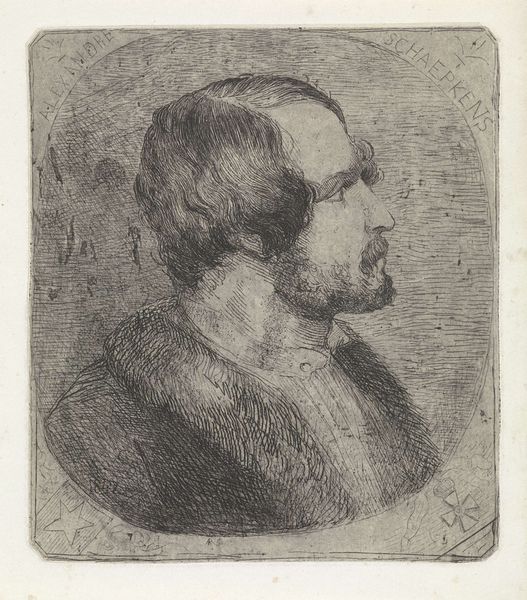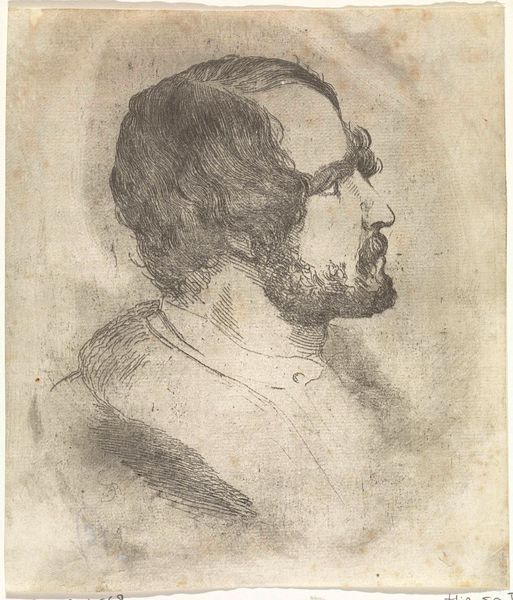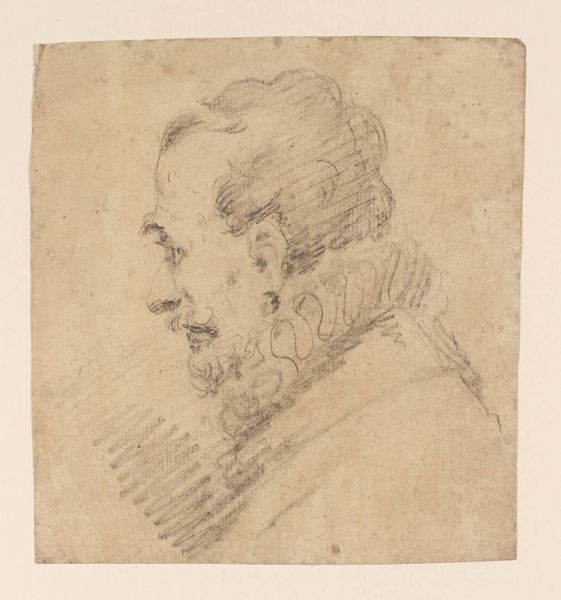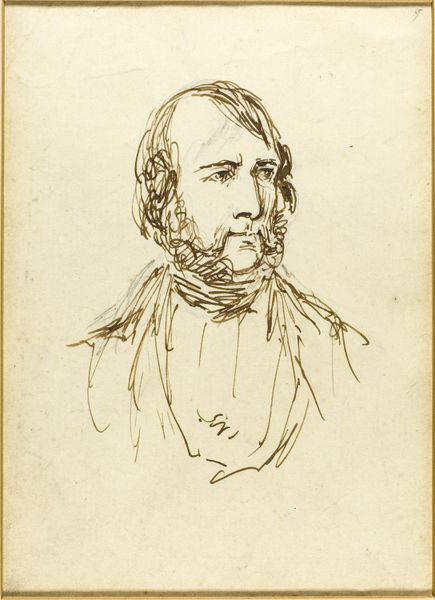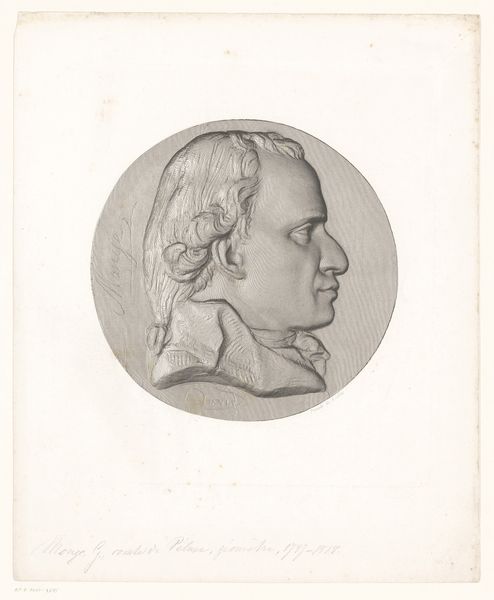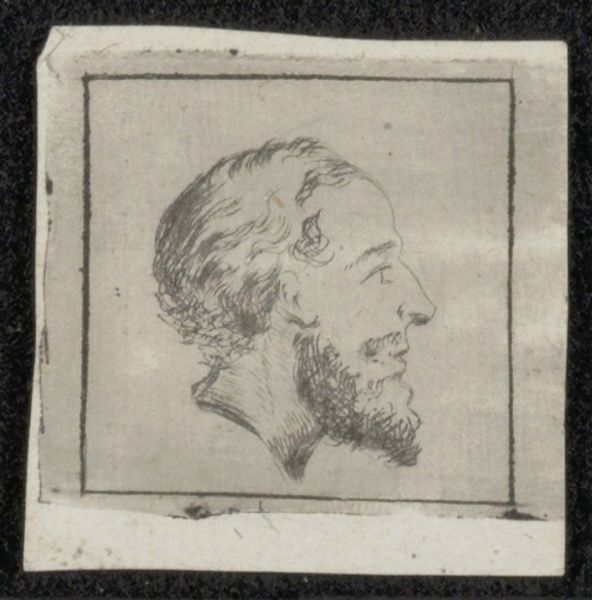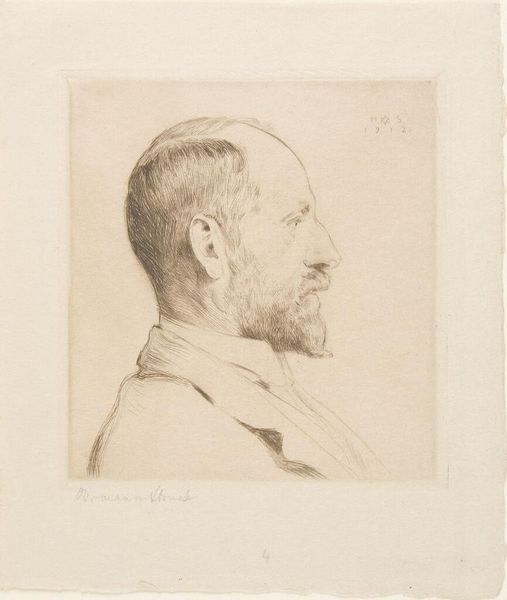
drawing, print, etching, ink
#
portrait
#
pencil drawn
#
drawing
#
self-portrait
# print
#
etching
#
pencil sketch
#
charcoal drawing
#
ink
#
pencil drawing
Dimensions: height mm, width 129137 mm
Copyright: Rijks Museum: Open Domain
Editor: Here we have “Portret van prentmaker Alexander Schaepkens,” dating from 1831 to 1904. It's a portrait using ink and etching on a print. I am struck by its intimacy; it feels very personal. What’s your take on this image? Curator: Indeed. This piece brings to mind questions of artistic identity and representation. Given the subject is himself a printmaker, how does this self-portrait fit into the broader historical context of artists portraying themselves and their role in society? Consider, for example, how the etching technique, a medium often used for mass reproduction, plays into ideas of artistic dissemination and accessibility during this period. Do you find anything in this etching reminiscent of earlier self-portraits by renowned printmakers? Editor: That’s fascinating! I hadn’t considered the printmaking aspect so deeply. It almost democratizes the portrait; he's not just representing himself, he's also showing his craft. I think I can vaguely see the style being reminiscent of Rembrandt’s etchings. Curator: Precisely! Rembrandt's influence loomed large, and the *idea* of the artist as a craftsman was evolving alongside changing social structures and artistic institutions. Was art now just a commodity or was it inherently elevated? Do you see any evidence of a potential attempt at legitimizing Alexander's artistic self-worth? Editor: Yes! This conversation has made me look at the work from a fresh perspective, it certainly brings attention to the importance of recognizing art's intrinsic role in society. Thank you! Curator: My pleasure. Thinking about these contexts really allows us to dive more deeply into an artist's motives.
Comments
No comments
Be the first to comment and join the conversation on the ultimate creative platform.
